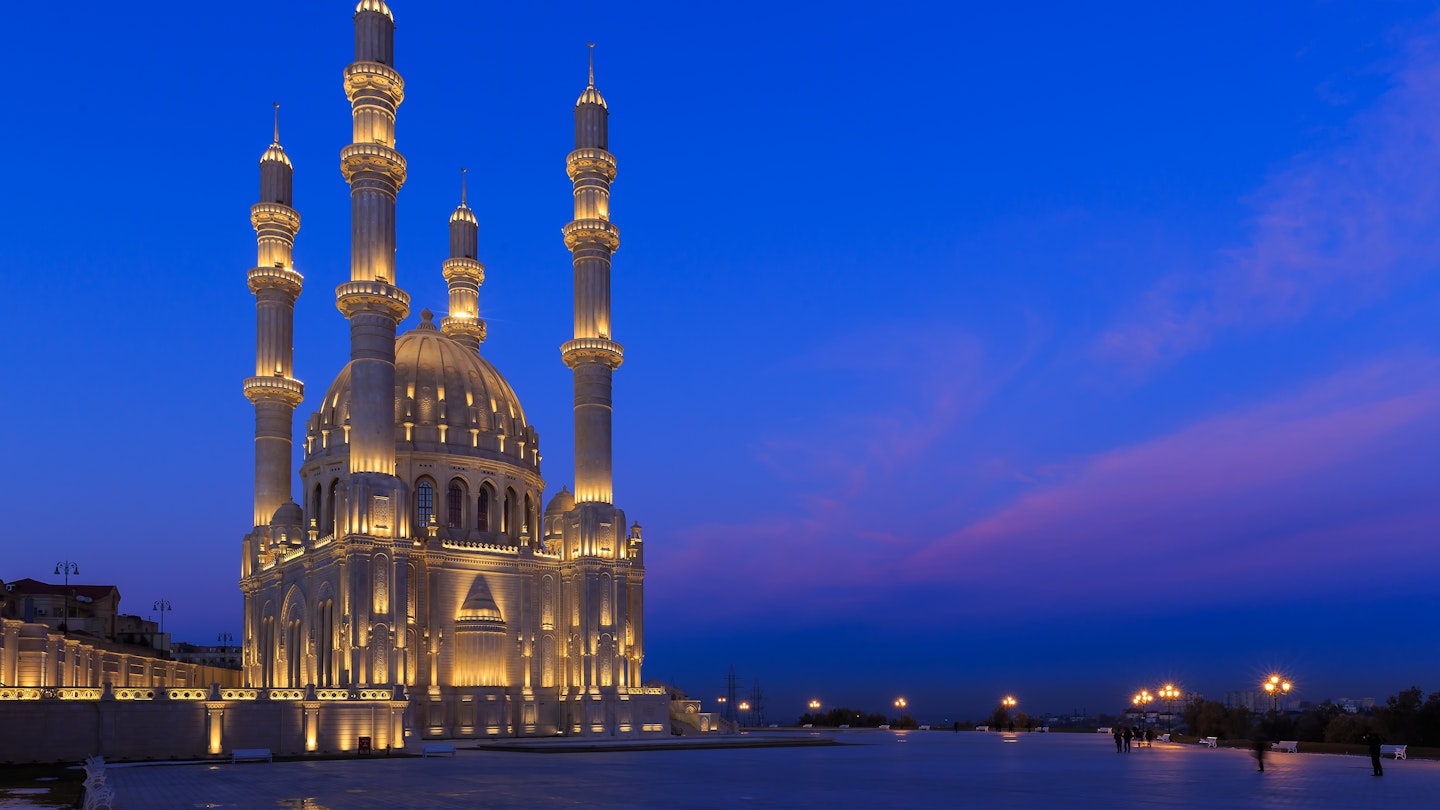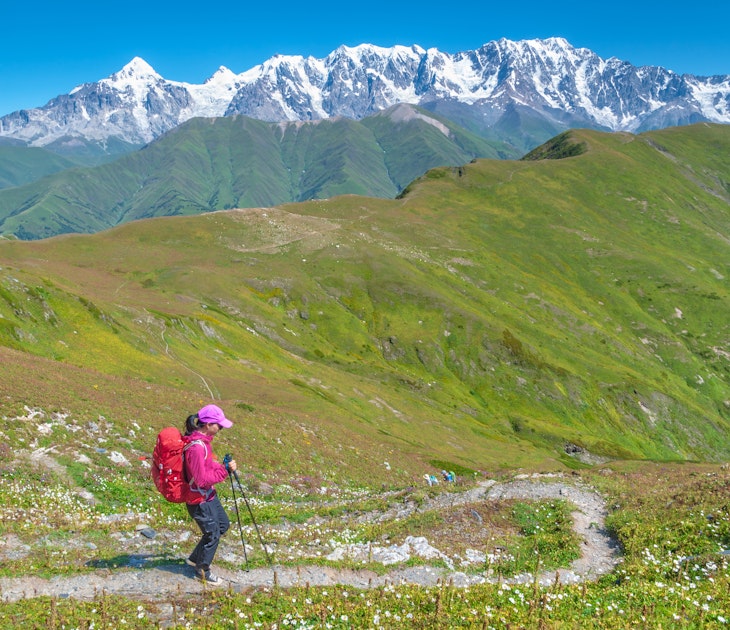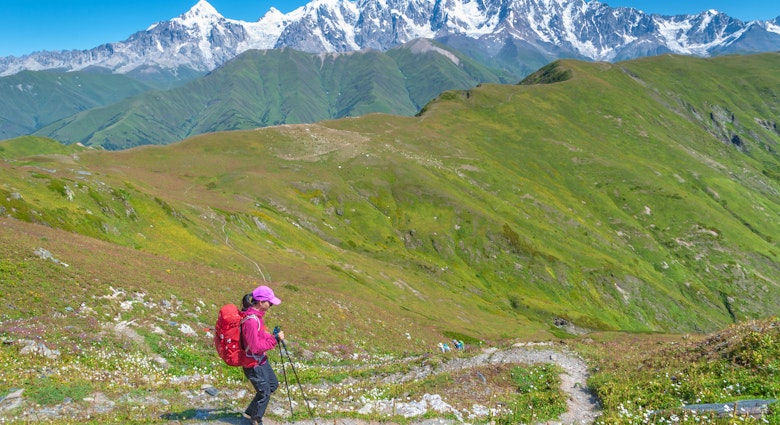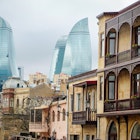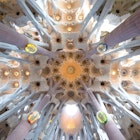The capital of Azerbaijan is a mix of the ultra-modern and the very-old, where the country's Turkish, Russian, Persian and European identities collide on every street. Here's how to explore the biggest city in the Caucasus, with experiences that will give you a feel for Baku’s awesome oddness.

See the incredible Flame Towers by day – and night
The modern parts of Baku were built with oil money. At the start of the last decade the city went to jaw-dropping lengths to show off its astronomical wealth, and futuristic buildings now completely dominate the skyline. The symbol of Baku has become its Flame Towers – three shimmering skyscrapers covered with LED panels that light up at dusk, transforming the towers into a flickering red and orange fire. Throughout the night the skyscrapers also morph into a waterfall, and the Azerbaijani flag. These displays are visible from everywhere in the city and gazing at the flames, especially, is a monumentally cool experience.
Try taste sensations of Azerbaijani food and wine
The pretty, pale homes of İçəri Şəhər aren’t as eccentric as the brash New City outside; but if you look close enough they are exciting in different ways. Behind many doors are secret restaurants. These are perfect places to try Azerbaijani cuisine, such as dolma (rice and other fillings wrapped in vine leaves), baliq (grilled sturgeon with a plum sauce) and qutab (savoury pancakes, sometimes stuffed with minced camel). The rooftop terraces of the Old City's Persian-style hotels, such as the decadent Sultan Inn, are also great spots to watch the sun go down with a bottle of pomegranate wine.
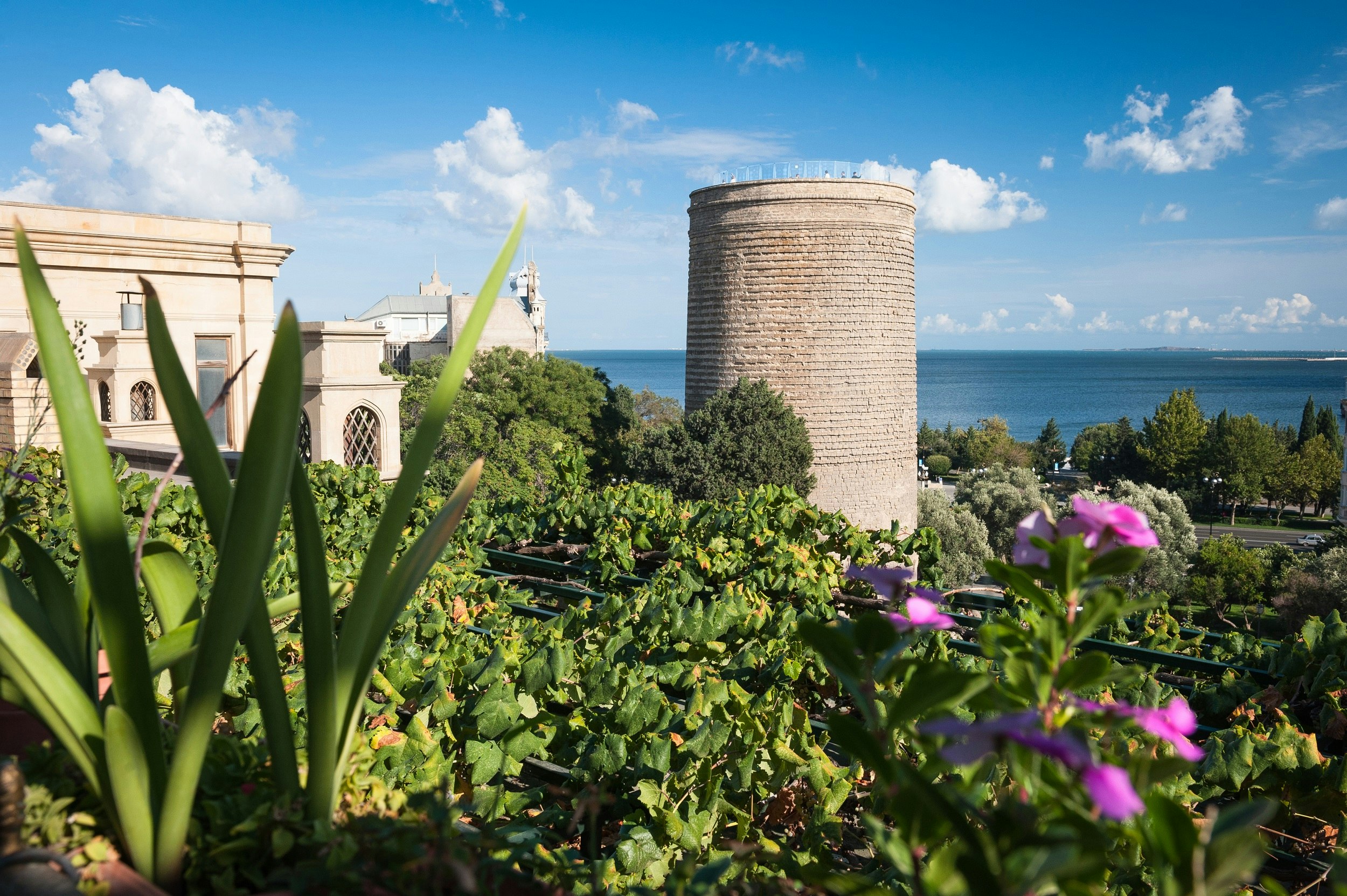
Explore the maze-like İçəri Şəhər, the Old City
Baku’s oldest and most mellow quarter is a maze of narrow sandstone streets known as İçəri Şəhər (Icheri Sheher, the Old City). From the 12th century this place was the centre of the Shirvanshah dynasty, which ruled over what is now Azerbaijan until 1539. Today about 3000 people still live within these stone walls, and work in İçəri Şəhər's art galleries, cafes and bath-houses. These Turkish-style hammams open from very early until very late, with separate opening hours for men and women.
Enjoy the views from Qız Qalası, Maiden's Tower
One of the oldest buildings in the Old City is Qız Qalası, known in English as the Maiden’s Tower. This Unesco-listed tower is not much to look at, but the stubby stone fortress is the setting for dozens of Azerbaijani myths and legends – and from the top there are clear views out over the Caspian Sea. Despite its name, the Caspian is actually a vast lake, which explains how Baku can still be so far below sea level. It is the world’s lowest capital city.
Stroll up to the Palace of the Shirvanshahs
Climbing the sandstone streets, past walls decorated with characterful ceramics and existentialist graffiti, you reach the highest part of the Old City, and the second Unesco-listed building in İçəri Şəhər: the 15th-century Palace of the Shirvanshahs. The palace is now home to a museum of Azerbaijani history – its beautiful stone chambers now have cool multisensory installations inside. The palace's courtyards are also some of the best places for night-time views of the Flame Towers.
Honor Azerbaijan's fallen at Şəhidlər Xiyabanı (Shehidler Hiyabani) cemetery
At the top of the steep hill in the New City that takes you to the Flame Towers, Şəhidlər Xiyabanı (Shehidler Hiyabani) is a cemetery and memorial to the first Azerbaijani soldiers who were killed during the Karabakh conflict in the 1990s. In this complex there is also a memorial to the Turkish soldiers who died during WWI, and a mosque that was donated to Baku by Turkey – both signs of how closely the two countries are linked.
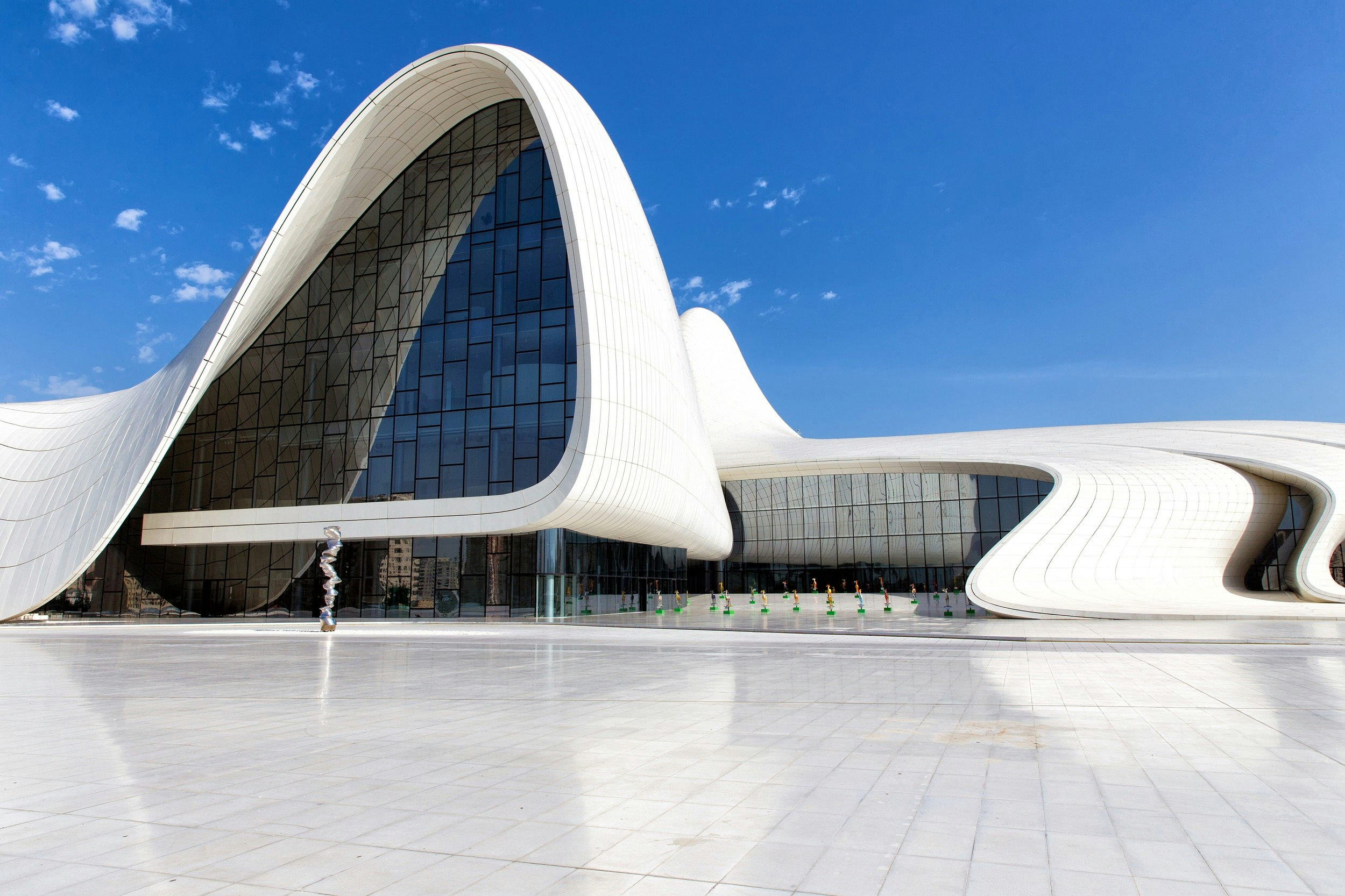
Admire Heydar Aliyev Centre designed by Zaha Hadid
Taking pride of place in the centre of the city, Baku’s other out-of-this-world piece of architecture is the curvaceous and brilliant-white Heydar Aliyev Centre. This exhibition space and concert venue, designed by architect Zaha Hadid, seems to change shape as you walk around it; the idea was to symbolise the fluidity and romance of modern Azerbaijan.
Marvel at the contradictions of modern Azerbaijan
Perhaps Baku’s biggest contradiction is that, as you stare at its futuristic landmarks, you are really looking into its past as well. Azerbaijan fell into an economic crisis soon after the Flame Towers, Heydar Aliyev Centre and the Azerbaijan National Carpet Museum (shaped like a giant rolled-up carpet and displaying the country's largest collection of them) were completed, which put a stop to the outlandish new buildings.
The country is still astoundingly wealthy – the annual Formula 1 Azerbaijan Grand Prix isn’t the only time of year when the streets are filled with expensive sports cars – but Baku is beginning to go mainstream as well. While a few years ago Baku was all about dazzling visitors with its originality, now in its new venues, like Park Bulvar Mall, you could be almost anywhere in the world. Its central pedestrian zones, Fountains Square and the nearby Nizami St, are filling up with European stores and brunch-spots.
Catch up on Baku's past at the Historical Museum
The Old City isn’t the only place to explore Baku’s past. The Historical Museum is worth a visit to learn about the other eras from Azerbaijan’s history, from the medieval Shirvanshahs, to centuries as part of Iran and the Russian Empire, and then its life as a Soviet Republic. The museum is housed in an opulent mansion that belonged to one of Baku’s greatest late-19th-century oil barons, which is worth visiting just for its dazzling interiors.
You might also like:
Baku for architecture buffs: the ultimate self-guided tour
8 stunning European cities for architecture
This ultra-marathon showcases the splendors of the Nagorno-Karabakh
